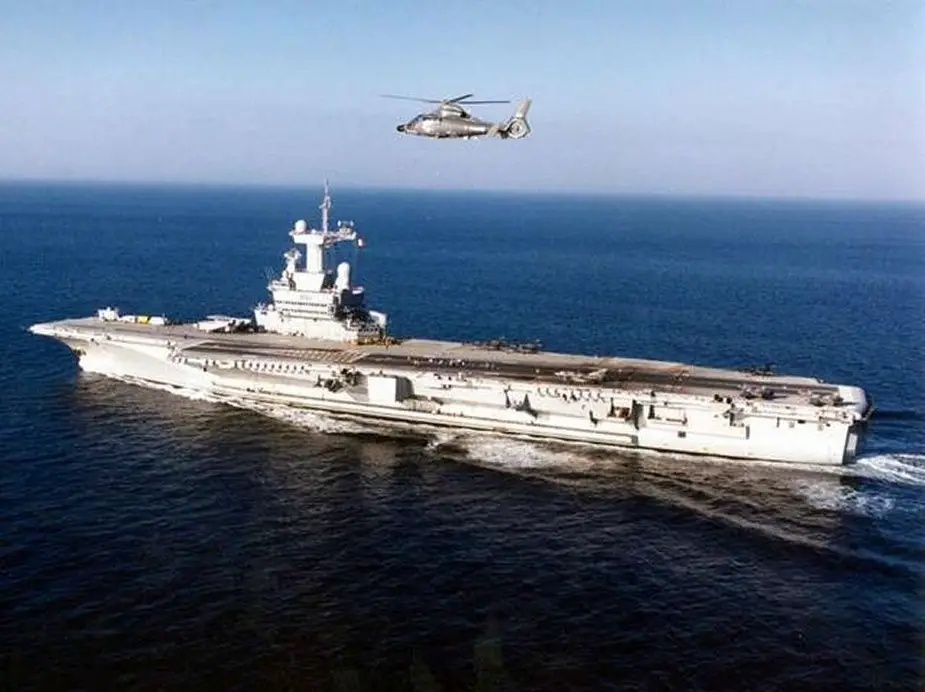Breaking news
French Navy to start testing new aircraft carrier by 2036.
The French Defense Ministry has announced that a new generation aircraft carrier, to be built in Saint-Nazaire, will begin sea trials in 2036.
Follow Navy Recognition on Google News at this link
 The Charles de Gaulle should be decommissioned in 2038-2040 (Picture source: Wikipedia)
The Charles de Gaulle should be decommissioned in 2038-2040 (Picture source: Wikipedia)
The new generation aircraft carrier intended to replace the Charles de Gaulle will be built at the Atlantic Shipyards and launched for the first tests in 2036, French Defense Minister Florence Parly announced on Monday, May 18. The nuclear aircraft carrier Charles de Gaulle will reach the end of its service life in 2038-2040.
The characteristics of the future successor to the Charles de Gaulle aircraft carrier have not yet been defined. “Let’s not limit our horizon or our imagination. We must not re-do the identical but seek the most ingenious, the most useful and the most effective capacities. Let us make this aircraft carrier a real forward base for our navy”, asked Minister Florence Parly at the last Euronaval exhibition. It nevertheless seems accepted that this future aircraft carrier could be more imposing than the current Charles-de-Gaulle.
A distinction must be made between propulsion systems and the energy source that powers them (conventional or nuclear). Indeed, the propulsion system of an aircraft carrier fulfills several missions. It is used to:
- ensuring the mobility of the building, by supplying the turbines with energy in order to actuate the propellers;
- supply the aircraft carrier's electricity;
- allow the operation of catapults, in order to operate the aircraft of the air group;
- supply the crew with fresh water.
Propulsion - nuclear or conventional - is, therefore, an essential element in the life of the building and its ability to fulfill its missions.
It is much likely that the future aircraft carrier will be more powerfully armed than the Charles-de-Gaulle and will have electromagnetic catapults making it possible to launch planes carrying more ammunition and / or fuel, to increase the pace of operations. This choice leads us to think that the propulsion will be nuclear, given that the New Generation Fighter [NGF] – the combat aircraft at the center of the Future Combat Air System (FCAS) – will be considerably heavier than the Rafale M and that it will also be necessary to plan the installations necessary for drone operations. And there is also the need for the ability to simultaneously "launch and pick up" aircraft, to provide more flexibility for flight operations.
In general, the logic behind the ship's specifications - one should rather say "weapon system" - will be more to determine the capabilities necessary to conduct the planned war missions, taking into account the enemy's defenses.
The question of the number of aircraft carriers to replace the Charles-de-Gaulle will quickly arise: in order to maintain a minimum permanence of the air and naval capacities, it would be necessary at least two. Affordable?



























